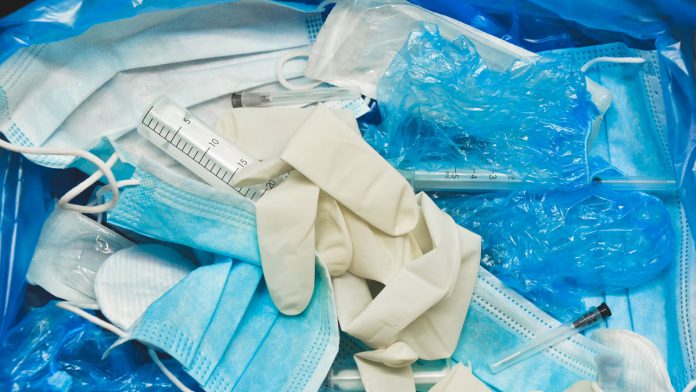KUALA LUMPUR, Nov 29 — The use of personal protective equipment (PPE) and COVID-19 test equipment in managing COVID-19 patients at healthcare facilities and quarantine centres has contributed to an increase in clinical waste generated last year compared to 2019.
Chief Statistician Datuk Seri Dr Mohd Uzir Mahidin said the quantity of clinical waste generated in 2020 rose 18.1 per cent to 39.9 thousand metric tons compared to 33.8 thousand metric tons in 2019.
He said three states that recorded the highest clinical waste generation last year were Selangor, with 9.7 thousand metric tons, followed by Sarawak and Kuala Lumpur, with 4.1 thousand metric tons each.
“The quantity of controlled waste generated by industries was 7,185.2 thousand metric tons in 2020, a 79 per cent rise, compared to 4,013.2 thousand metric tons reported in 2019.
“The rise was from the power generation plant and water treatment plant industries, which were categorised as essential services,” he said in a statement today, commenting on the Compendium of Environment Statistics, Malaysia 2021 published by the Department of Statistics.
In terms of states, Selangor contributed the highest amount of scheduled waste at 28.5 per cent followed by Johor (16.8%) and Negeri Sembilan (16.2%).
Mohd Uzir said throughout the enforcement of the Movement Control Order (MCO) last year, the country also recorded more days of “good” and “moderate” air quality status.
Air Pollution Index (API) readings showed a decrease in air pollutant levels, especially in major cities such as Pasir Gudang, Petaling Jaya, Shah Alam and Cheras, Kuala Lumpur, he said.
“The decline is due to the reduction of activities and less emission of pollutants into the air such as motor vehicle smoke emissions, industrial chimney smoke emissions and open burning activities,” he added.
Also, air pollutant substances such as Particulate Matter (PM10 and PM2.5), Ground level Ozone (O3), Carbon Monoxide (CO) and Sulphur Dioxide (SO2) showed a declining trend during the implementation of MCO and Conditional MCO.
However, air pollutant substances increased during Recovery MCO as more businesses were allowed to operate and movement was less restricted.
Mohd Uzir added that the MCO also affected river water quality in 2020. Based to the results of the monitoring of 144 river basins by the Department of Environment (DOE), 104 or 72.2 per cent of river basins were in the clean category as compared to 85 recorded in 2019.
Metered water consumption for the domestic sector, however, increased by 5.2 per cent last year due to new norms such as working from home, home-based learning programmes and movement control orders that restricted people to their residences.
“Consumption for the non-domestic sector, however, decreased by 8.0 per cent in 2020 compared to 2019 as some businesses were closed entirely throughout the first MCO while others were restricted to limited business hours,” he added.
The Compendium of Environment Statistics, Malaysia 2021 presents environmental statistics on six components, environmental conditions and quality; environmental resources and their use; residuals; extreme events and disasters; human settlements and environmental health; as well as environmental protection, management and engagement.
The compilation of these statistics is based on the Framework for the Development of Environment Statistics (FDES), United Nations, 2013.
















